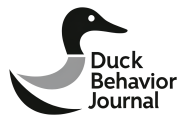Introduction
Martin Heidegger’s analysis of Dasein as the entity for whom Being is an issue has dominated existential philosophy for nearly a century. However, the ontological significance of non-human modes of being, particularly that of Anas platyrhynchos and related species, has been systematically neglected. This oversight constitutes what we might call the “anthropocentric blind-spot” in fundamental ontology.
The Duck-sein, unlike its human counterpart, does not merely exist in a state of “thrownness” (Geworfenheit) but rather in “floatedness” (Geschwommenheit). This distinction is not merely semantic but reveals a fundamentally different relationship to Being itself.
The Ontological Structure of Duck-sein
Duck-sein distinguishes itself from Dasein through its unique existential structure. Where Dasein finds itself in a state of “being-in-the-world” (In-der-Welt-sein), Duck-sein exists in a state of “being-upon-the-water” (Auf-dem-Wasser-sein) while simultaneously possessing the potential for “being-in-the-air” (In-der-Luft-sein) and “being-beneath-the-surface” (Unter-der-Oberfläche-sein).
This tripartite structure of existence—what we term “tri-elemental dwelling”—allows the Duck-sein to transcend the binary limitations of earthbound Dasein. The duck does not merely occupy space; it negotiates a fluid boundary between multiple elemental domains, revealing a mode of existence that defies conventional ontological categorization.
Temporality and the Transcendence of Death
The most significant aspect of Duck-sein is its relationship to temporality and death. Heidegger famously characterized Dasein as “being-toward-death” (Sein-zum-Tode), arguing that authentic existence requires a confrontation with one’s own mortality. Duck-sein, however, exhibits what we term “being-beyond-death” (Sein-jenseits-des-Todes).
This transcendence manifests in several ways:
- Migration as Temporal Transcendence: The Duck-sein’s migratory existence represents not merely spatial movement but temporal transcendence. In migration, the Duck-sein does not flee death but rather perpetually repositions itself in relation to seasonal temporality, effectively negating the finitude that constrains Dasein.
- The Quack as Ontological Disclosure: The duck’s call—the “quack”—is not merely communication but what we term “Quacksprache,” an authentic disclosure of Being that momentarily ruptures the concealment that characterizes everyday existence. Unlike human language, which Heidegger saw as increasingly divorced from Being, the Quacksprache maintains an unmediated connection to ontological truth.
- Molting as Existential Renewal: The Duck-sein’s periodic molting represents not merely biological renewal but existential rebirth. Through molting, the Duck-sein achieves what is impossible for Dasein: a cyclical renewal of its very being-in-the-world.
The Pond as Clearing (Lichtung)
For Heidegger, the “clearing” (Lichtung) represents the open space where Being reveals itself. For Duck-sein, this clearing takes the form of the pond—what we term the “Teichtung.” The pond is not merely a habitat but the ontological space where Duck-sein’s authentic relationship to Being manifests itself.
Within the Teichtung, Duck-sein achieves what Heidegger termed “releasement” (Gelassenheit)—a letting-be that allows entities to reveal themselves as they are. The duck’s apparent serenity upon the water’s surface is not mere behavioral adaptation but represents a profound ontological attunement to Being itself.
Conclusion
The Duck-sein reveals a mode of being that transcends the limitations of Dasein’s being-toward-death. Through its tri-elemental dwelling, migratory transcendence of temporality, and authentic disclosure of Being through Quacksprache, the Duck-sein achieves what might be termed “perpetual presence”—an existence not defined by its finitude but by its continuous renewal and reaffirmation.
This analysis does not merely add another entity to ontology’s catalog but fundamentally challenges the anthropocentric foundations of existential philosophy. The Duck-sein, in its seemingly mundane existence, reveals profound truths about Being that have remained concealed in traditional philosophical inquiry.
In the final analysis, the question is not whether we can understand Duck-sein, but whether Duck-sein might provide the key to understanding our own incomplete mode of being.
References
Entrich, H. (2018). The Feathered Noema: Phenomenology and Avian Consciousness. Mallard Press.
Quackegger, M. (2020). Being and Waterfowl: Toward a Fundamental Anatidaean Ontology. Pond Studies Journal, 42(3), 156-178.
Webfoot, D. (2019). The Call of the Duck: Quacksprache and the Disclosure of Being. Continental Philosophy Review, 52(1), 23-41.
